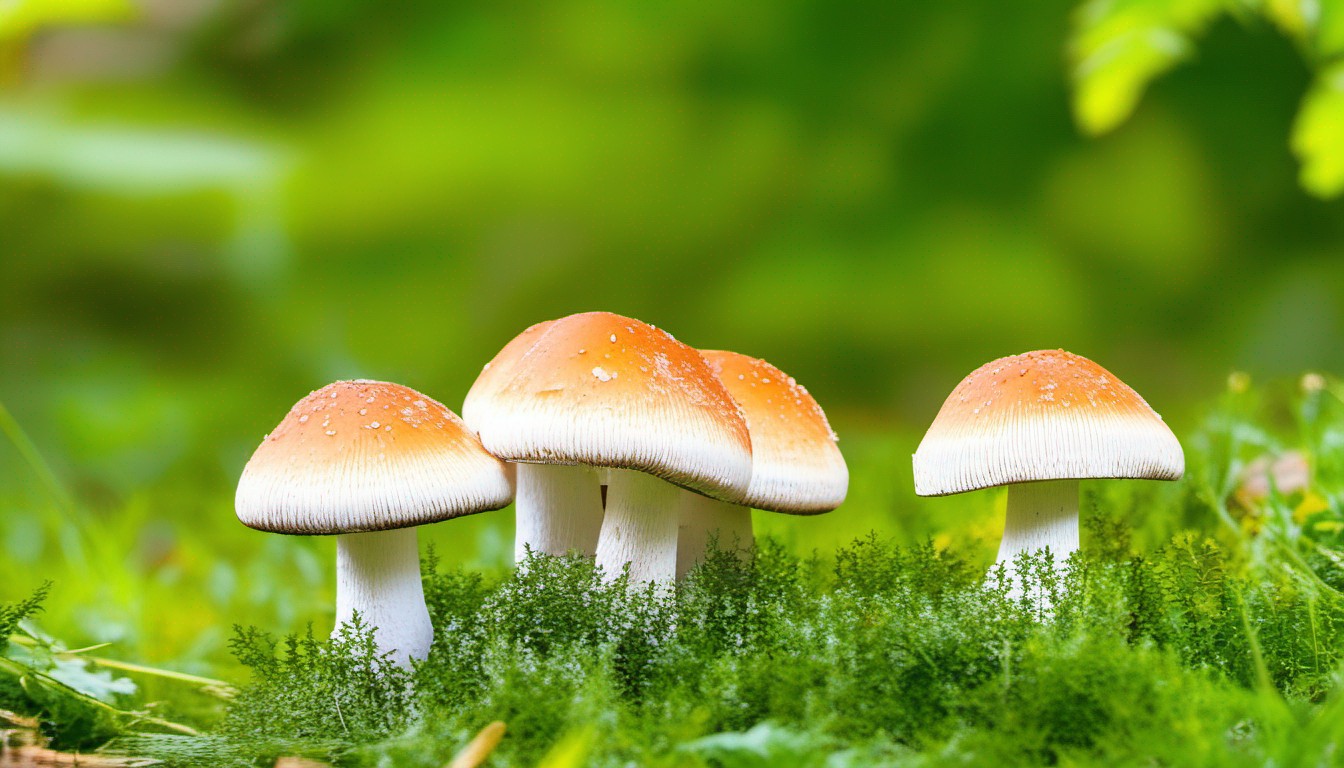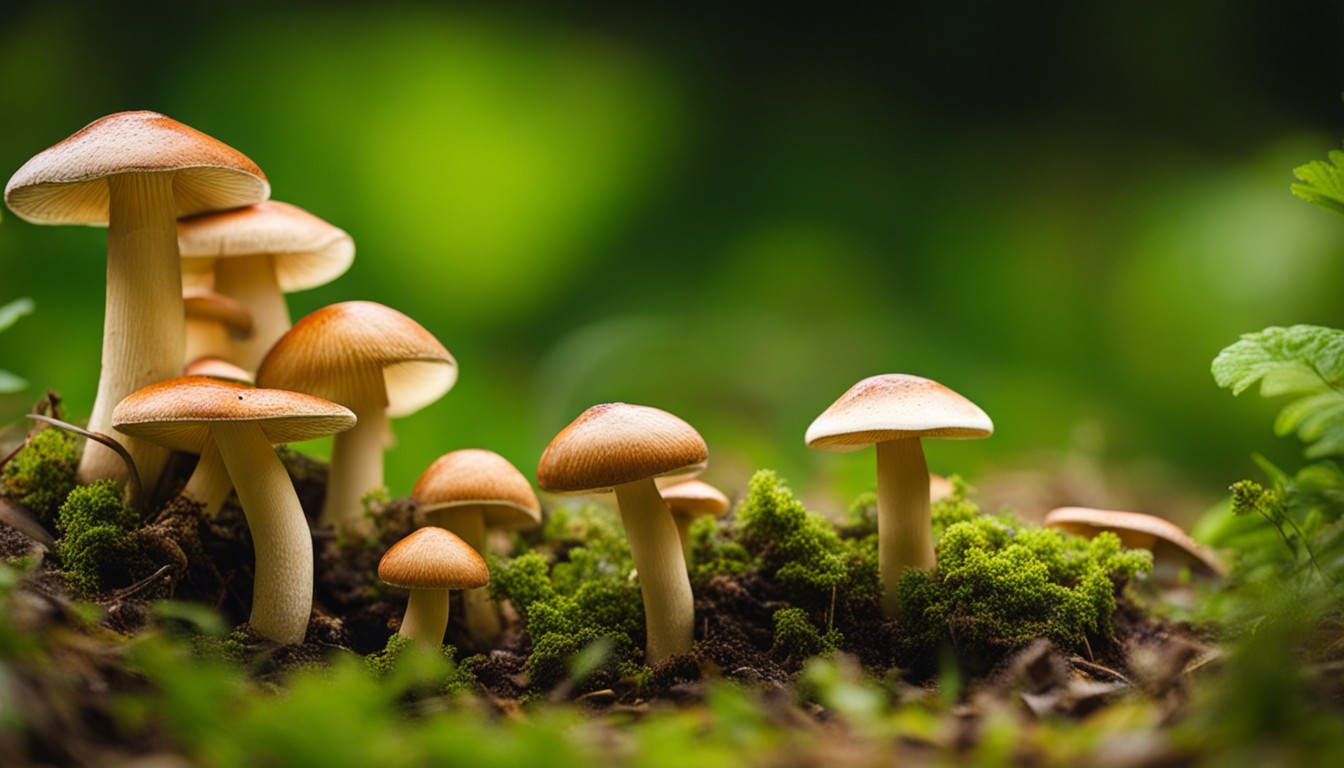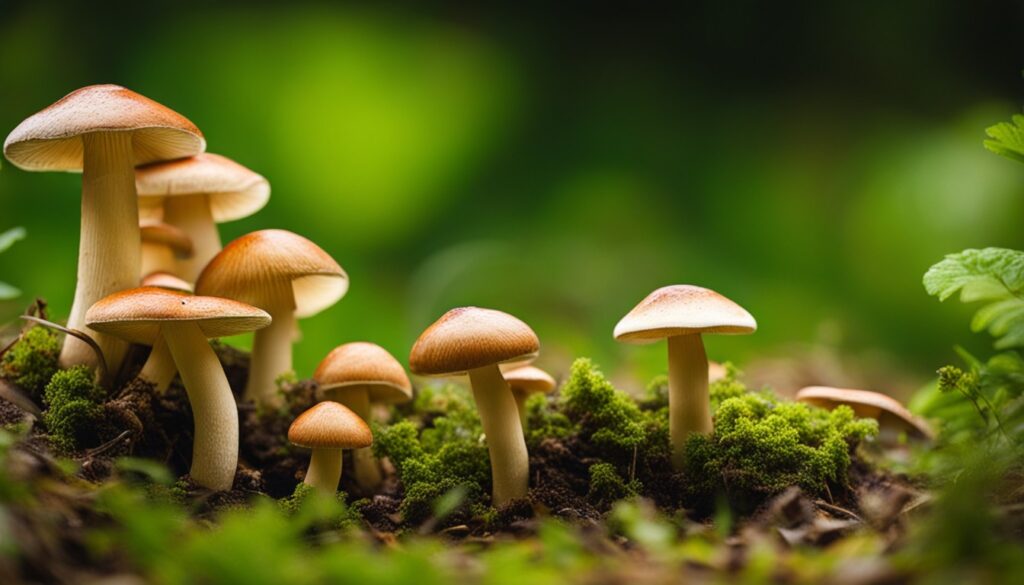Mushrooms are a crucial ingredient in sushi, adding unique flavors, textures, and umami notes to the dish. When it comes to choosing the best varieties of mushrooms for sushi, there are several options to consider. From the delicate and earthy shiitake mushrooms to the robust and meaty king oyster mushrooms, each variety offers its own distinct attributes. Understanding the characteristics of different mushrooms can help sushi enthusiasts elevate their culinary creations and take their sushi experience to the next level. In addition to shiitake and king oyster mushrooms, other popular choices for sushi include enoki mushrooms with their long, thin stems and delicate taste, and maitake mushrooms with their rich, meaty texture. Each of these mushrooms brings a unique flavor profile to sushi, allowing for endless possibilities in taste combinations. Moreover, incorporating a variety of mushrooms in sushi not only adds depth and complexity to the dish but also provides nutritional benefits as mushrooms are low in calories and high in essential nutrients. Whether you prefer a maki roll bursting with umami from shiitake mushrooms or a nigiri topped with tender slices of king oyster mushrooms, exploring the world of mushrooms for sushi opens up a realm of culinary exploration and delights for sushi lovers. So, dive into the fascinating world of mushrooms and let your creativity soar as you experiment with different varieties to create sushi masterpieces that will impress your guests and leave them craving for more.
Introduction to Mushrooms for Sushi
In the realm of sushi-making, fungi play a significant yet whimsical role. Diverse in their variety, mushrooms not only introduce unique textural elements but also remarkably augment the flavor profile.
Sushi-compatible mushrooms bridge a delicate balance between complexity and subtlety, weaving in umami notes that enhance the sushi’s taste. Their role is not merely culinary but also artistic, contributing significantly to sushi’s aesthetic presentation.
The Role of Mushrooms in Sushi Making
Mushrooms are unsung heroes in sushi-making, offering a wonderful contrast in flavor and texture. Their earthy taste complements the freshness of traditional sushi ingredients, while their unique textures juxtapose perfectly with the smoothness of sushi rice and raw fish.
Incorporating mushrooms into sushi can enhance flavor profiles, increase nutrient content, and provide an ample source of protein for vegetarian and vegan variants.
Often replacing or complementing fish-based fillings, mushrooms bring a strong, savory umami flavor, adding depth to the sushi roll. Their ability to so easily absorb other flavors results in sushi pieces that are exceptionally customizable and palate-pleasing.
Considering the nutritional aspect, mushrooms are a powerhouse of nutrients associated with reduced risk of diseases such as cancer and heart disease. Their inclusion in sushi, therefore, can make this already nutrient-rich dish even more of a superfood, with other benefits including improved digestion and better immune function.
Mushrooms, besides supplying plenty of vitamins, act as an excellent source of protein for vegetarian and vegan sushi. This, combined with fiber-rich sushi rice and assorted vegetables, results in a balanced meal that ensures you’re not missing out on any essential nutrients.
Why Choosing the Right Mushroom is Important

Selecting the right mushroom is key in sushi preparation, as it can greatly affect both the taste and aesthetics. Distinct mushroom varieties carry individual flavors and textures, which can considerably embellish or diminish the overall sushi experience.
Understanding the mushrooms’ natural compounds is vital for a harmonious combination. Chemical constituents in mushrooms like guanylic and glutamic acids bring out fuller flavors when paired with sushi’s other ingredients, enhancing the umami factor.
Moreover, mushrooms also interact with sushi’s ingredients at a chemical level. For instance, some mushrooms contain lentinan, a complex carbohydrate that can balance and lessen the fishy taste of certain sushi types, providing a more subtle, refined flavor to the dish.
Popular Varieties of Mushrooms for Sushi
A delectable realm of fungi awaits in sushi cuisine, where several mushroom species hold esteemed positions. Among the favorite picks, Shiitake, Enoki, Maitake, Oyster, Shimeji, and King Trumpet mushrooms each bring unique textures, flavors, and aesthetic contributions to sushi dishes.
Variety truly is the spice of life, and it’s no different when selecting mushrooms for sushi. Shiitake, prized for its smoky flavor and chewy texture, often stars in sushi rolls. Delicate Enoki mushrooms lend a crunchy touch enfolded within the sushi, while Maitake and Oyster mushrooms, celebrated for their rich umami essence, accentuate sushi’s gastronomic poetry. Roaring with a flavor profile akin to scallops, meaty King Trumpet mushrooms complement traditionally fish-focused sushi beautifully, and versatile Shimeji mushrooms are a crowd-pleaser. Each serves a distinct purpose – painting culinary strokes on the sushi canvas.
Shiitake Mushrooms
Revered for their savory umami taste and hearty texture, Shiitake mushrooms dominate sushi cuisine for good reasons. Their robust flavor and versatile pairing potentials make them an ideal choice for any sushi creation.
- Shiitake mushrooms bring a deep, earthy flavor that meshes well with the often-light flavors of sushi.
- They hold up to various cooking methods, keeping their texture in both raw and cooked forms.
- Pair Shiitake with avocado or cucumber in sushi rolls for a taste combination that’s hard to beat.
- For maximum flavor, lightly sauté Shiitake slices in soy sauce before using them in sushi.
Enoki Mushrooms
Characterized by their thin, noodle-like shape, Enoki mushrooms bring an added crunch to sushi. Their mild flavor serves to complement rather than overpower the overall sushi flavor profile, subtly enhancing the dish.
- Add the crunch of Enoki mushrooms to create textured sushi.
- Use the mild flavored Enoki mushrooms to subtly enhance the sushi’s taste.
Maitake Mushrooms
Intricately woven into the very fabric of sushi, Maitake mushrooms impart a rich, earthy flavor and a delectable texture that utterly enhances the palate. Revered for the characteristic depth they offer to Sushi dishes, Maitake mushrooms are distinguished by their health benefits, contributing notably to the overall wellness of sushi enthusiasts.
- Maitake mushrooms possess a unique earthy flavor and a dense texture that heightens the sensory experience of Sushi.
- The health benefits associated with Maitake mushrooms include boosting immunity, promoting heart health, and aiding in weight loss.
Oyster Mushrooms
Oyster mushrooms, famed for their delicate sweetness and robust flesh, have a flourishing place in sushi cuisine. Their unique flavor profile and versatility make them a top pick for a variety of sushi roll preparations.
- Being part of salads served alongside sushi
- Used as a delectable addition to sushi fillings
- Elevating the taste profile of sushi when sautéed, marinated, or blanched
Shimeji Mushrooms
Shimeji mushrooms serve a unique purpose in sushi, balancing out the freshness of seafood with their earthy depth. They complement the delicate taste and texture of sushi rice and are a popular addition to vegetarian sushi rolls.
These small, clustered mushrooms are renowned for boosting the umami factor in sushi. They add a savoury richness that works brilliantly with sushi’s typically clean and bright flavors.
Shimeji mushrooms increase the complexity of your sushi, building layers upon layers of flavor depth. The mushrooms effortlessly merge with the sushi roll’s other components, inviting a delightful sensory exploration.
Introducing Shimeji mushrooms into sushi does more than just complement flavors. This addition also contributes to the texture and satiety of the roll, making sure every bite is as satisfying as it can be.
King Trumpet Mushrooms
King Trumpet mushrooms, also known as king oyster mushrooms, greatly influence each mouthful’s texture and overall flavor profile of sushi, thanks to their meaty build and rich, savory taste. When used in sushi, they bring an exquisite balance of umami and subtly sweet earthiness that lifts each bite.
Recognized for their substantial texture, King Trumpet mushrooms are a fan favorite in sushi rolls. Their firm robustness stands up well to the sushi roll’s construction, ensuring it will not crumple under the tight compression – a bonus for both sushi makers and eaters.
Moreover, this mushroom’s substantial texture acts to elevate the overall dining experience. It affords a satisfyingly meaty bite akin to high-quality proteins, making King Trumpet mushrooms an excellent ingredient for vegetarian sushi rolls. Their flavor also marries beautifully with traditional sushi complements such as wasabi, soy, and pickled ginger.
Choosing and Preparing Mushrooms for Sushi

Selecting the best mushrooms for crafting sushi involves a careful process. Qualities like freshness, texture, and scent play dominant roles which justifies the saying; a sushi dish is only as good as its ingredients.
Preparing mushrooms for sushi is an art in itself. It starts from cleaning and trimming without losing the essence to mastering the slicing techniques that ensure the right texture and the infusion of flavors are perfectly balanced for a sushi meal.
Selecting Fresh Mushrooms
Keen sense of observation and understanding of fungi biology plays pivotal roles in selecting the freshest mushrooms. Look out for firm and plump textures, without soft or damp spots, demonstrating that the mushroom has retained its moisture and strength, vital indicators of freshness.
Components of freshness also include color and smell. Mushrooms ideal for sushi maintain uniform color, free from dark spots or discoloration, denoting decay. Additionally, a pleasant, earthy smell is typical of fresh mushrooms.
The next aspect to consider is the mushroom’s gills. Keep in mind the mantra ‘closed is better’. Compact and tight gills, not stringy or frayed, suggest the mushroom is still within its peak time and hasn’t aged considerably.
Lastly, be aware of the mushroom’s shelf life. A low-stored duration between harvest and purchase ensures that the mushroom retains all of its fresh, natural flavors. It’s recommended to use the mushroom within a week for ultimate sushi experience.
Cleaning and Trimming Mushrooms
Render your mushrooms sushi-ready with the artisans’ guide. It entails using a simple, dry kitchen towel or a soft brush to gently get rid of any dirt on the mushroom’s surface, instead of washing them, which might make them too fluid-filled and spoil their texture.
The regimen is simple yet crucial to sushi perfection. Begin by trimming the stem ends which can often be tough and chewy. Depending on the mushroom variety, entirely removing or leaving a small portion of the stem makes a helpful difference.
After cleaning and trimming, be sure to inspect each mushroom meticulously. Discard any that have dark spots or show signs of decay. Keeping in tune with these practices will ensure a better flavor and texture when the mushrooms are utilized in sushi.
Slicing Techniques for Mushrooms
Mastering the art of slicing mushrooms can truly elevate your sushi making. Minute variations in cut create unique textures and reveal distinctive flavors, adding finesse to each roll.
Different mushroom slicing strategies can influence your sushi experience. Slender strips provide a subtle essence, while thicker cut mushrooms deliver a robust, earthy punch. Experimenting with slicing methods will open up a new world of flavor profiles in sushi crafting.
Cooking Techniques for Mushrooms in Sushi
An array of cooking techniques can be effectively employed to truly accentuate the distinctive flavors and textures of mushrooms in sushi preparation. From light blanching to sautéing with a drizzle of sesame oil, the approach varies, with each technique adding character to these delectable fungi.
Cooking techniques seasoned with experience can do wonders for mushrooms, elevating sushi appeal by imparting mouthwatering notes and texture complexities. Whether it’s about rendering them juicy through blanching or achieving a rich umami flair via marinating, the culinary strategy shapes the sushi experience profoundly.
Blanching Mushrooms
Blanching mushrooms is a preferred method to use when preparing them for sushi. It involves immersing them briefly in boiling water, which enhances their texture, making them more suitable for sushi rolls.
The process not only brings the ideal tenderness but also maintains the mushy texture required in sushi. By ensuring that the mushrooms don’t become too soft or squishy, they fit seamlessly into sushi rolls alongside other ingredients.
Moreover, blanching helps retain the mushrooms’ nutritional integrity. This procedure preserves essential nutrients within mushrooms, such as vitamins and minerals, crucial for both taste and health.
Despite the high heat process, blanching only cooks the outer layers of the mushroom. Consequently, the nutrients are locked within, providing a nutritious and delicious bite in every sushi roll piece.
Therefore, blanching offers a solution for preparing mushrooms for sushi, guaranteeing not only the desired texture but also preserving nutritional value, making it an advantageous method for sushi chefs.
Sautéing Mushrooms
Sautéing mushrooms amplifies their inherent flavor profiles, thus creating delectable fillings for sushi. The heat prompts the release of their natural umami essence, merging harmoniously with other sushi ingredients.
Mastering the art of sautéing mushrooms for sushi is an acquired skill. The goal is to strike a balance between enhancing the mushroom’s umami richness without overpowering the sushi’s overall delicate taste.
Marinating Mushrooms for Sushi

Marinating mushrooms, an integral step in sushi preparation, significantly refines their flavor. It subtly infuses them with savory depths and aromatic nuances, amplifying the overall sushi experience.
Exploring the arena of marination presents countless possibilities for culinary creativity. Various combinations of soy sauce, vinegar, miso, and other oriental ingredients can be used to impart an exhaustive range of flavors to these umami-packed sushi fillings.
FAQ: Mushrooms for Sushi
Unlock the fascinating world of mushrooms for sushi and revolutionize your culinary experiences with their diverse flavors, textures, and vital roles in sushi craftsmanship.
What role do mushrooms play in sushi?
Mushrooms play a crucial role in sushi, bringing unique flavors, textures, and umami notes to the dish. They contribute to the overall taste profile, enhancing the complexity and depth of flavors.
What are some popular varieties of mushrooms used in sushi?
There are several popular varieties of mushrooms used in sushi. Shiitake mushrooms are known for their delicate and earthy taste, adding a rich umami flavor and a satisfying meaty texture. King oyster mushrooms have a robust and meaty texture, providing a substantial bite and a deep umami flavor. Enoki mushrooms, with their long, thin stems and delicate taste, add a subtle crunch and mild flavor to sushi. Maitake mushrooms have a rich, meaty texture, offering a hearty element to sushi creations.
How do shiitake mushrooms enhance the sushi experience?
Shiitake mushrooms enhance the sushi experience by infusing it with a rich umami flavor and contributing a satisfying meaty texture. They add depth and complexity to sushi rolls, nigiri, and other sushi preparations.
What makes king oyster mushrooms a great choice for sushi?
King oyster mushrooms are a great choice for sushi due to their robust and meaty texture. They provide a substantial bite and a deep umami flavor that pairs well with various sushi ingredients. King oyster mushrooms can be thinly sliced and used as a topping for nigiri or incorporated into maki rolls for a delightful sushi experience.
Can enoki mushrooms be used in sushi?
Yes, enoki mushrooms can be used in sushi. With their long, thin stems and delicate taste, enoki mushrooms add a subtle crunch and a mild flavor to sushi. They are often used in sushi preparations to add visual appeal and a unique texture.
How do maitake mushrooms contribute to sushi?
Maitake mushrooms contribute to sushi by providing a rich, meaty texture that adds a hearty element to the dish. Their distinct flavor complements other sushi ingredients and creates a satisfying eating experience.
Are mushrooms a healthy addition to sushi?
Absolutely! Mushrooms are not only delicious but also a healthy addition to sushi. They are low in calories, fat-free, and packed with essential nutrients such as vitamins, minerals, and antioxidants. Incorporating mushrooms into your sushi preparations adds a nutritious element to your culinary creations.
How can I get creative with mushrooms in sushi?
To get creative with mushrooms in sushi, explore different mushroom varieties and experiment with flavor combinations. From shiitake nigiri to king oyster mushroom maki rolls, the possibilities are endless. You can also mix and match various mushroom types to create unique and innovative sushi creations. Let your imagination guide you and discover new taste experiences with mushrooms in sushi.
Unlock the potential of mushrooms for sushi and embark on a culinary journey that will revolutionize your sushi craftsmanship. Delight in the diverse flavors, textures, and nutritious benefits that mushrooms bring to your sushi creations.
Conclusion
Our journey through the world of mushrooms in sushi preparation underscores their versatility and indispensability. Each variety, from Shiitake to King Trumpet, brings unique flavors and textures to the table, enhancing the sushi experience.
The selection, preparation and cooking techniques outlined here emphasize the importance of handling these fungi with care. A well-prepared mushroom can be an unsung hero within a sushi roll, contributing not just flavors, but also health benefits.
- – Shiitake Mushrooms: Earthy and smoked flavor profile.
- – Enoki Mushrooms: Delicate and mildly sweet.
- – Maitake Mushrooms: Robust and woodsy.
- – Oyster Mushrooms: Subtle sweetness with a hint of the sea.
- – Shimeji Mushrooms: Nutty and buttery.
- – King Trumpet Mushrooms: Yields a meaty texture.

